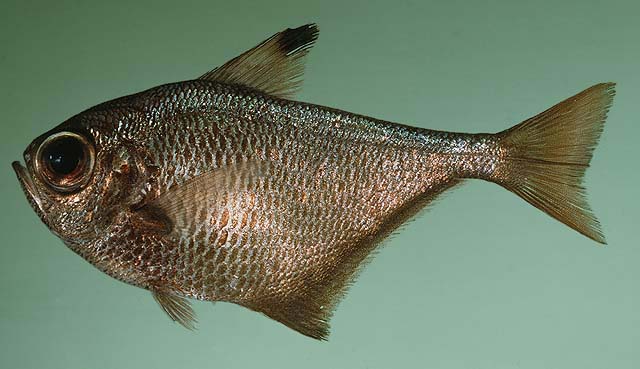| Pempheridae (Sweepers) |
| 16 cm TL (male/unsexed) |
|
demersal; marine; depth range - 20 m |
| Indian Ocean: from Visakhapatnam and Tuticorin on the east coast of India, and Kovalam in Kerala on the southwest coast. |
|
Dorsal spines (total): 6-6; Dorsal soft rays (total): 9-10; Anal spines: 3-3; Anal soft rays: 34-42; Vertebrae: 25-25. This species is distinguished by the following characters: 49-60 pored lateral-line scales; 4.5-5.5 scale rows above lateral line; 14-18 (usually 16) circumpeduncular scales; absence of blackish spot on pectoral fin base; usually only the tip of dorsal fin blackish; eye huge, diameter 13.0-15.3% SL, 43.6-51.5% HL; very deep body 44.6-49.1% SL; sides of body usually with irregular faint longitudinal light stripes (Ref. 95675). |
| Usually solitary in caves or under large overhanging corals to about 20 m depth (Ref. 48636). |
|
Not Evaluated (N.E.) Ref. (130435)
|
| harmless |
|
Very common in the eastern Levant. A Lessepsian migrant (Ref. 43448). P. mangula is the only Pempheris which has migrated to the Mediterranean from the Red Sea. Previous reports of P. vanicolensis in the Mediterranean were misidentifications (Ref. 95675). |
Source and more info: www.fishbase.org. For personal, classroom, and other internal use only. Not for publication.

